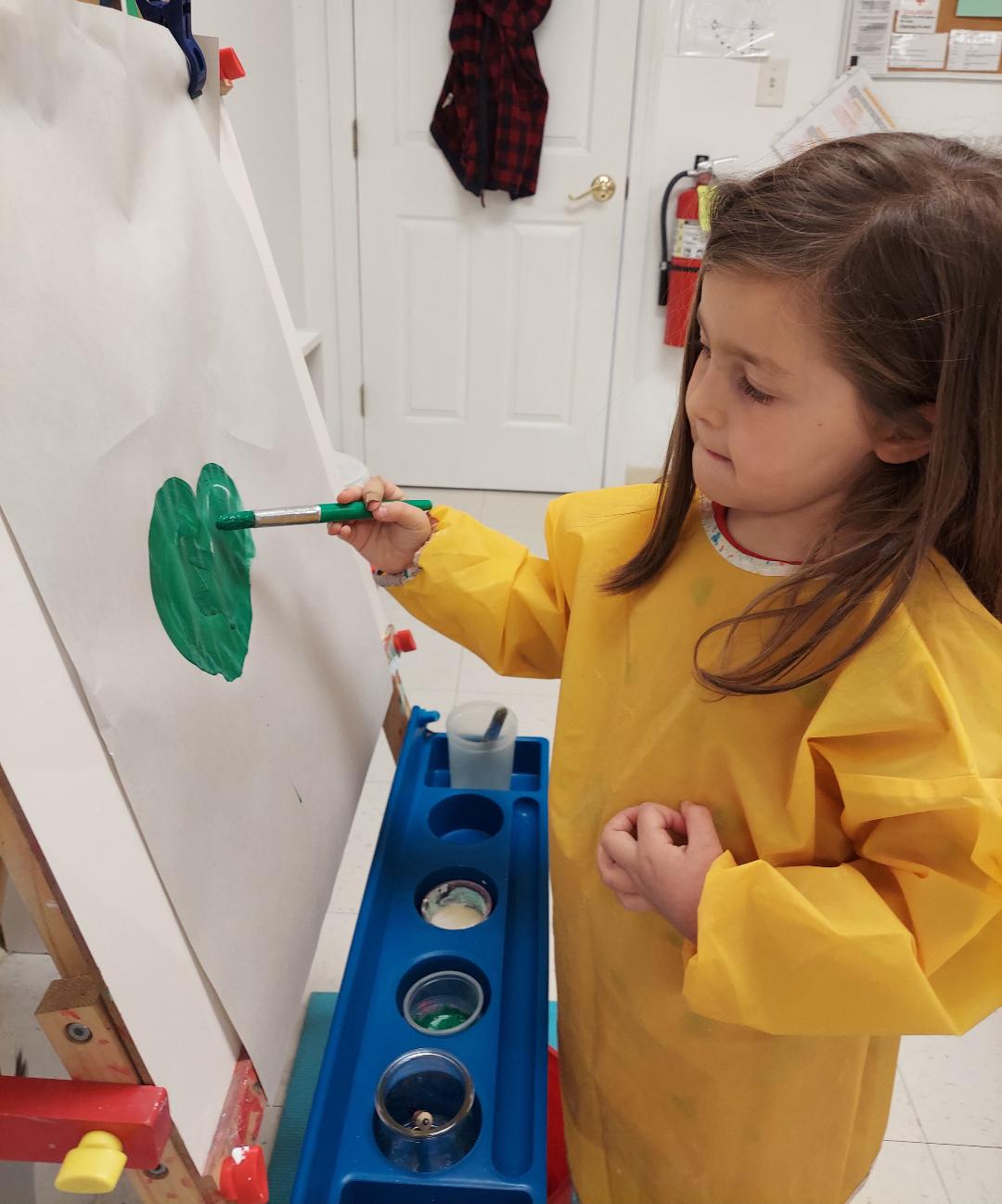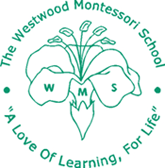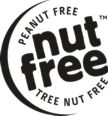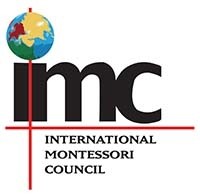One of the most obvious areas of the classroom to promote children’s creativity is the art area. In our school, we take a skill-based approach much like the individual skills of Practical Life. Beginning with the easel, the medium or (material) we use, starts with the most simple. In September we begin with large chalk on the board, without paper.
Each month the media changes to; chalk with paper, crayons, markers, colored pencils, stamps, bingo markers, chalk with water, and then paints. This approach gives the child plenty of time to experience the media, but changes before the child grows tired of it. On the art shelf, our first lesson is large crayon coloring. Paper cutting typically follows. At first, we use large strips for cutting and eventually we provide patterns and shapes for more refined cutting. This year we added a recycling container in which to place the children’s cutting scraps. (we can use these later for our gluing lesson)! Another very useful skill is what we call “punching out, or pin pushing”. Using a specific tool, the child makes small holes close together along a line on a paper. When completed, the paper separates, much like perforated paper. It’s magical, and the children love it! This skill is used in Geography for map making, and Science for puzzle diagrams. Additional lessons are folding and gluing paper, gluing collage, watercolor painting, and finger painting.
Each art experience promotes fine motor development, eye-hand coordination, and concentration skills. Most importantly, each child can create their art as they choose. “Freedom within limits” is the essence of our philosophy and is clearly present in the art area every day.




